For my senior recital at Oberlin I created a tryptic video art piece titled Ring | Axle | Gear. Each section of the piece is around a minute and a half, and explores various ways in which the shapes ring, axle (line), and gear can be manipulated, accompanied tightly by sound design that uses a wide variety of synthesized and real world sounds. The piece was created using Adobe After Effects, several Trapcode effects from Red Giant Software, and Vade’s v002 plugins for the visuals, and Pro Tools, Soundhack, and MaxMSP for the audio.
Ring
I created the piece by first working a bit on the video, then matching that with the sound design, extending the audio a bit, matching that with the video, and so forth. The piece was an exploration of animation for me, and the first time I had created animation in a timeline environment (as opposed to the text-based environment of Processing or the visual object based environment of Jitter). The animation explores 2- vs. 3-dimensional space, transitioning violently or smoothly between them, and at times settling into a kind of 2.5-dimension world. I also explored “glitches” in the video software I was using: artifacts that come from rotating an object faster than it was intended to be rotated, or using over-saturation and video feedback to expand the color palette chaotically.
Axle
The audio was made using real world sounds that have been manipulated so much as to be almost completely unrecognizable or, on the other hand, audio that is completely unaffected (such as the metallic sounds in Axle). I also utilized “authentic” glitchy sounds, sounds that were the result of computational accidents, primarily corrupted audio files.
Gear
I’m interested in exploring animation in more depth in the future. My first goal is to bring what I’m doing more into the 21st century: I feel a great deal of Ring | Axle | Gear is trapped stylistically between analog and early digital video from the 1970s/80s and more modern video (creatively utilizing particles, 3D models, accurate shading and depth-of-field and other techniques that fast computers allow). My second goal is to explore medium mapping within fixed video: many video softwares (including After Effects) allow parameters of the video to be controlled by audio heuristics, e.g. the volume of the low frequencies of an audio file causing a video object to jump or deform. This technique will add more depth to the interaction between the video and the sound than could be achieved with “by hand” sound design.
